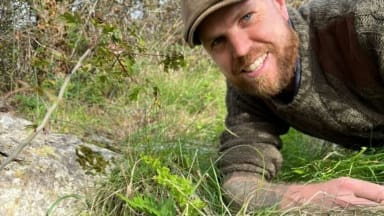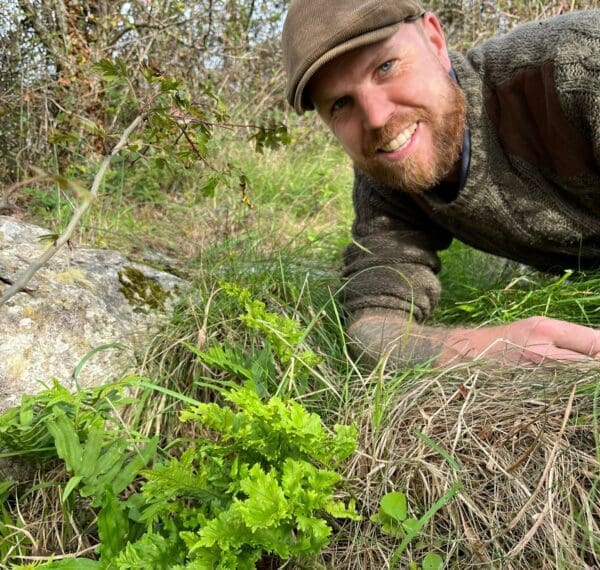
A member of the British Pteridologocal Society (BPS), Neil Frame has a passion for (native) ferns. The UK is home to over 30 common fern species, from hart’s tongue to hard fern, oak fern to bracken. Frame however, was interested in the lesser common varieties such as, Polypodium cambricum, not often seen in the wild. Polypodium cambricum, also know as the southern polypody, limestone polypody, or Welsh polypody, is a species of fern in the Polypodiaceae family and is native to West and Southern Europe. They tend to be evergreen or deciduous, with creeping rhizomes bearing simple or pinnate fronds at intervals. Cambrian types, with their heavily serrated fronds, look feathery (or “plumose” if you speak ‘fern’), have a very striking appearance, making them highly desirable for fern enthusiasts.
On a BPS field trip, Frame and fellow enthusiasts were looking for new species variations. “As is the case with many of our native ferns, they all throw up wild variations. Some more than other. P.cambricum is quite prone to throwing up variation in comparison to the other Polypodium species so we were there to see if we could find any,” he explained.
“The most fascinating Polypodium cambricum is ‘Cambrian Richard Kayse’, first discovered in 1668, in south Wales and is still known at that site today. A small piece of the plant was removed and brought into cultivation in the 80’s and is now in many fern collections and gardens across the country. Every plant of ‘Polypodium cambricum ‘Richard Kayse’ in cultivation today is a direct descendent of that plant first discovered in 1668. ……how cool is that!!?” said Frame.
Finding new varieties and cultivars is exciting stuff for plant enthusiasts, and the fern world is no different. “For ferns, it started in the victorian times when the whole country was taken over by fern fever. Fern hunting and collecting became a social event and ferns influenced alot of art, decor and fashion back then. Hundreds and hundreds of wild varieties were collected and cultivars raised from spore. Alot of these old victoriana cultivars are still around today and the interest in these finds has not faded. It is an area of ferns that really captivates me. And I love reading all the fern publications from those times, reading the stories of who found what and when,” explains Frame.
Inspired by his field trips, Frame revisited the site in search of botanical treasure and struck gold. He discovered a P.cambricum, which is sporadically fertile. Cambrian type ferns are sterile which means that division is the only way to propagate them. Finding a fertile variation is very rare and unique. Bar a mention in “some notes of a frond pressing in the 1800’s”, there is no evidence of a living, fertile Cambrian ever in cultivation.



Frame has collected a small piece of rhizome to grown on and safeguard its future. “I’ve grown it on for two years now and it’s a beautiful thing. As is often the case with some ferns found in the wild, they can really develop into something almost unrecognisable from its wild form when grown under cover, in ideal conditions.”
Frame regularly revisits the site of his discovery to make sure the origins of his find is “still safe and happy”. He explains, “I feel it’s my duty to monitor it from now on and I will be making the journey again in the next couple of months to check up on it.”
The authority on ferns, author, gardener, horticulturalist and past president of the BPS, Martin Rickard made the recommendation that the new find was to be named Polypodium cambricum ‘Neil Frame’ – the likes of which has never been seen before and is now in cultivation, thanks to the enthusiasm and passion of its name sake.

